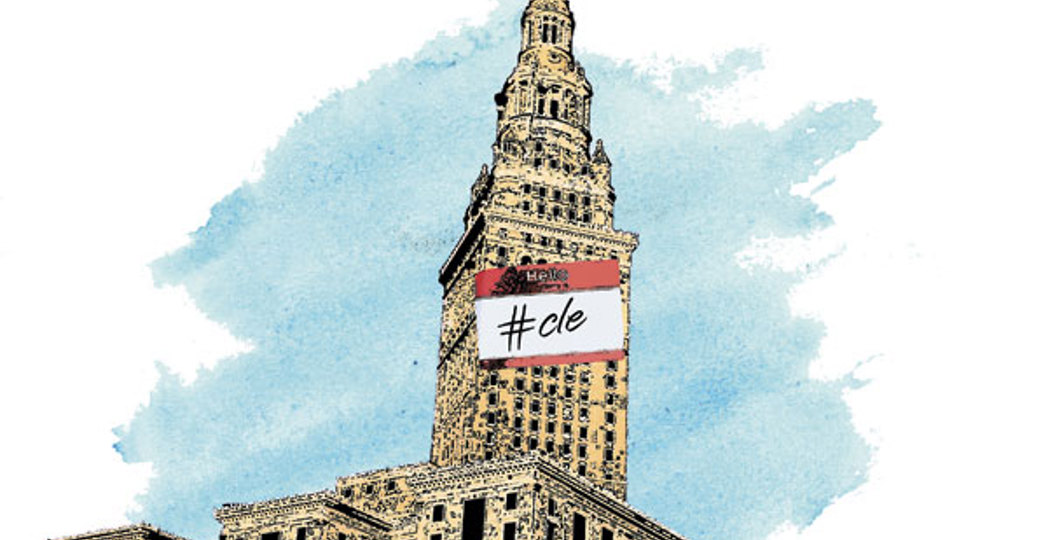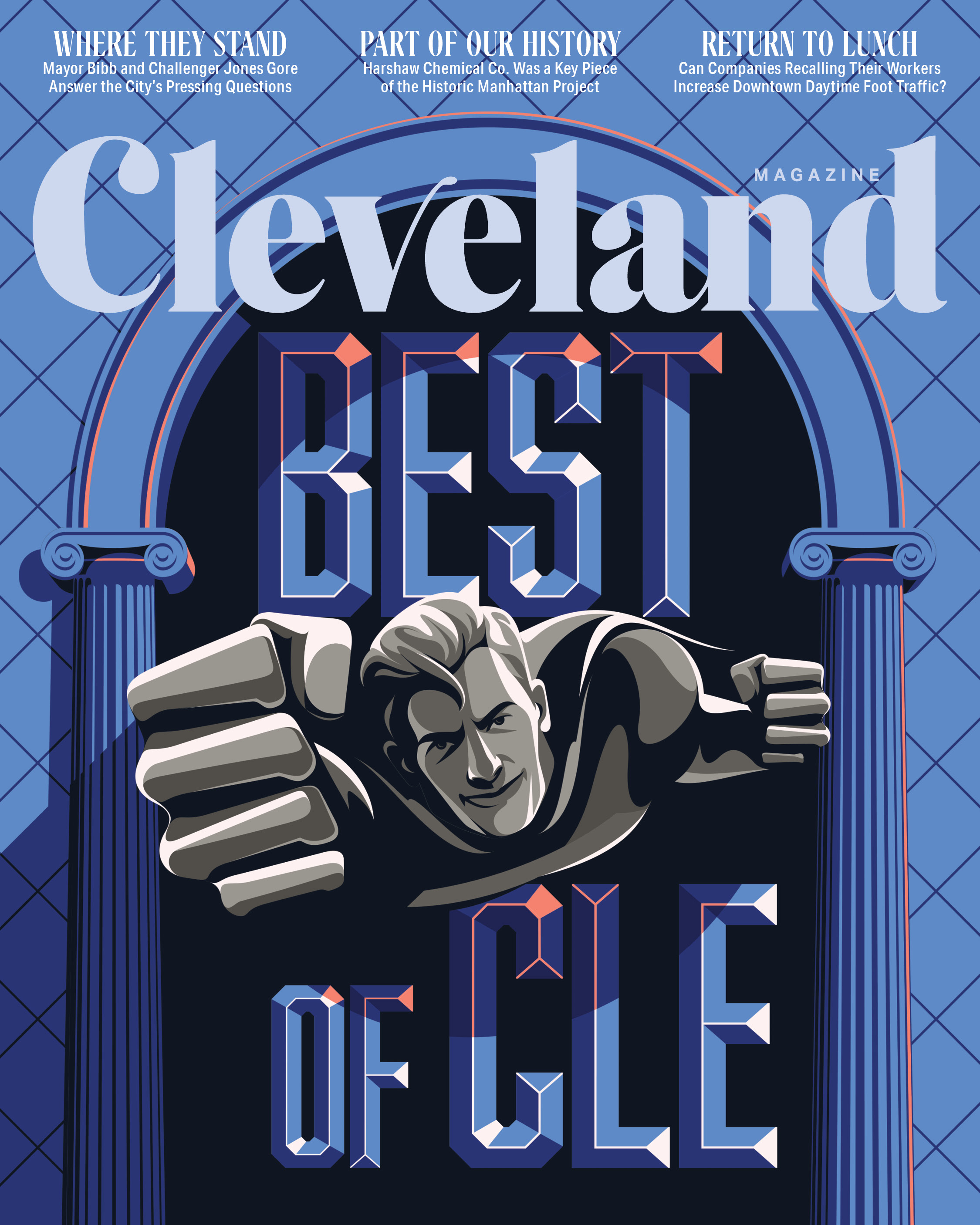Can the RNC Revive Cleveland's Convention Business?
by Sheehan Hannan | Jul. 15, 2016 | 1:00 PM

Charlee Ottersberg
Somehow, we’re right back where we started. In 1924, Cleveland hosted its first national political convention — the coronation of Republican Calvin Coolidge. Since he only listened to the proceedings on the radio, Coolidge never took the stage at the sparkling new Cleveland Public Auditorium in which the convention was held.
The 11,500-seat hall — at the time one of the largest in the country — seemed to materialize just in time for the Grand Old Party. Construction didn’t begin until 1920, and the hall opened in 1922. Although it was planned prior to World War I, the hall was publicly financed in 1916 at the beginning of what would be a 15-year run of Republican mayors and city managers.
The new auditorium was the 15th in Cleveland, according to city chronicler William Ganson Rose’s accounting in 1920. For accommodations, conventiongoers could stay in one of the city’s 76 hotels.
The first major show in the space was the American Building Exhibition. In its first year of operation, Ganson Rose noted, 750,000 people walked through Public Auditorium’s doors. He was, perhaps, embellishing. Ganson Rose was instrumental in securing the $2.5 million bond issuance needed to build the impressive space.
Although not built explicitly to attract a Republican convention, the hall certainly helped. So did the lobbying efforts of U.S. Rep. Theodore Burton, who managed to secure Public Auditorium for the Republicans free of charge. The city also provided the GOP with a $125,000 expense fund — about $1.7 million in today’s money.
The bet paid off. Twelve years later the GOP returned. And once the Great Depression relented, the city’s industrial economy and convention business soared.
Strikingly, 1924 parallels today. Then, as now, the city is on the cusp. Could the RNC be what Cleveland needs to regain a foothold in the national convention marketplace?
“Absolutely,” says David Gilbert, president and CEO of Destination Cleveland and the Cleveland 2016 Host Committee. For the past couple of decades Cleveland has been out of the convention business, he says, in part due to a noncompetitive venue and shortage of rooms.
“Now in a very short period of time,” Gilbert says, “we’re adding a brand-new convention center, the Global Center for Health Innovation and boosting up the number of downtown hotels by more than 50 percent.”
But in its first full year of operation, the convention center was middling at best. Of 201 events there in 2014, only 23 were exhibition hall events — big-ticket, multiday gatherings that bring folks in from out of town. Those people stay in hotels, eat at restaurants and go out for entertainment.
Convention center general manager Mark Leahy calls such gatherings the “golden goose.”
By 2015, the geese were building a flock. Last year the center hosted 196 total events, 41 of them of the big-ticket variety. In the space of a single year, exhibition hall bookings virtually doubled. Attendees to the center booked 82,882 hotel room nights, according to convention center estimates.
Those numbers are promising, because the economic stakes have never been higher. In the economy of 1924, vibrant local businesses attracted national conventions and trade shows. They came to Cleveland, the center of industry.
Now the opposite is true. Northeast Ohio’s economy does not have the same magnetism. Conventions are an economic development tool, a way to bring in global capital, jobs and business opportunities.
“It’s kind of like, you know, the government also built roads,” says Leahy. “Where would the auto industry be if the government didn’t put roads in?”
Leahy thinks the RNC will give Cleveland an edge in the convention market, which he says translates to economic activity. “If we can do this, we can do anything,” says Leahy.
Calculated using a formula from the Destination Marketing Association International, not actual receipts, the center was estimated to have had a $99.46 million impact last year.
Heywood Sanders, a professor at the University of Texas San Antonio, studies the convention market. He is skeptical of taxpayer-financed convention centers. His book, Convention Center Follies, disputes the claim that such facilities are economic drivers.
He is less optimistic about Cleveland’s chances after the RNC.
Cleveland’s 257,000 square feet of space is in the middle of the market. Even in the Rust Belt, it is outpaced by larger convention centers, such as Columbus’ 1.7 million square feet and Indianapolis’ 1.2 million.
“The nature of the industry at this point is oversupplied and a buyers’ market,” says Sanders. “[The RNC] likely won’t make any difference.”
Leahy and Gilbert don’t dispute that Cleveland is a middle-market player. “It’s like a pyramid,” says Gilbert.
Cleveland, says Gilbert, is chasing the pyramid’s center section — medium-sized conventions that bring in out-of-towners.
But, Sanders counters, larger centers can also compete down-market for smaller events.
Even with focused, aggressive sales, the competition is fierce. Often, in bids to bring in exhibition hall events, space or services are offered up for a subsidized or discounted rate. Occasionally, the space comes for free. Many cities, including Cleveland’s competitors such as Charlotte, North Carolina, and Cincinnati, have set up funds to incentivize convention holders. “That’s a very standard practice in the industry,” says Gilbert.
In Cleveland, space is sometimes offered for free to lure exhibition hall events, which often book years ahead of time. In return, the center gets a beefy payment for food and beverage or audiovisual. “Sometimes I would give up a buck to make three,” says Leahy. “That’s not a bad decision.”
Although there is no central pool of incentive money to offset discounts, there may be one in the future. “We’re looking into that,” says Leahy. Such a fund could be financed by a voluntary hotel tax, he says.
While some incentives are available from Destination Cleveland and other sources, says Gilbert, it is not drawn from a single central fund. “We are in the midst of trying to develop a new model for how to best collectively all do that,” he says. “We don’t love it, because you have to give to get.”
Such incentives are evidence of the fight ahead. The city was a late entrant to the convention market. Now it must brawl for every scrap of business. Indeed, says Gilbert, his sales staff has increased from eight to 14 people. But there is a glimmer, one that may be amplified by the RNC. Every month the number of leads they pursue increases, he says.
Just as in 1924, Cleveland has grand, gleaming spaces. Again, we have the chance to prove ourselves. It is uncertain how Cleveland’s convention business will fare in the future. The RNC is not a guarantee. But it is an opportunity.
Only fools would let it pass.
Trending
-
1
-
2
-
3
-
4
-
5










